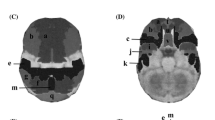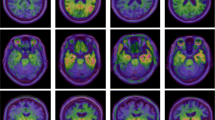Abstract
Preliminary reports suggest improved executive function in patients with lobar dementia after treatment with single doses of the alpha2 adrenoceptor antagonist, idazoxan. The potential for use in probable Alzheimer-type dementia prompted the present study. Fifteen patients with probable Alzheimer-type dementia were examined twice with neuropsychological measures and 14 also with single photon emission tomography (SPET) after a single double blind oral administration of 40 mg idazoxan or placebo in a balanced cross-over design. Brain perfusion maps were spatially transformed into standard stereotactic space and compared pixel-by-pixel. A parametric analysis was used to examine the relationship between the drug effect, verbal fluency and brain perfusion. Two to 3 h after idazoxan, measures of reaction time, Stroop test, category fluency and anxiety were unchanged. Verbal fluency (letter) and spatial working memory were impaired and performance on the Tower of London test in a sub-set of patients showed a trend to impairment in the idazoxan condition. Idazoxan produced a modest relative activation in left thalamus and inferior occipital cortex; decreases occurred in inferior anterior cingulate and left insular cortex. There were significant correlations on both days between measures of fluency and brain perfusion in left lateral prefrontal cortex. The reduced performance with idazoxan was directly correlated with reduced perfusion in left lateral prefrontal cortex, supporting an important interaction between drug and task perfomance. The imaging component of the study therefore suggested that activation of frontal networks is necessary for performing fluency tasks in Alzheimer-type dementia. Brain networks involving prefrontal cortex are the locus for the primary cognitive effects of noradrenergic drugs. The direction of the effect of any dose of agonist or antagonist may depend critically upon the age and pathology of the experimental subjects and the relationship between performance, noradrenergic drive and task difficulty.
Similar content being viewed by others
Author information
Authors and Affiliations
Additional information
Received: 21 October 1996/Final version: 19 December 1996
Rights and permissions
About this article
Cite this article
Goodwin, G., Conway, S., Peyro-Saint-Paul, H. et al. Executive function and uptake of 99mTcexametazime shown by single photon emission tomography after oral idazoxan in probable Alzheimer-type dementia. Psychopharmacology 131, 371–378 (1997). https://doi.org/10.1007/s002130050305
Issue Date:
DOI: https://doi.org/10.1007/s002130050305




